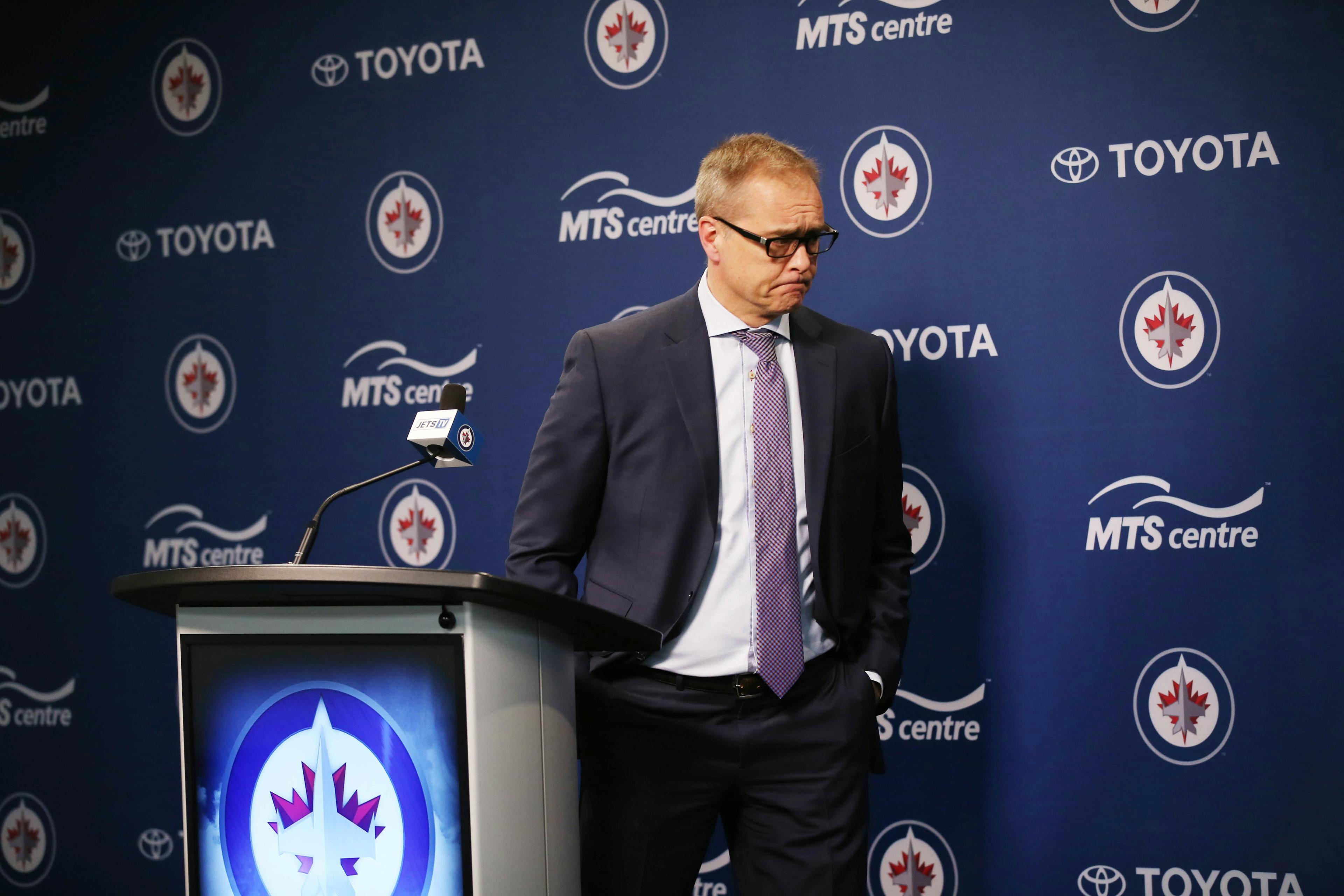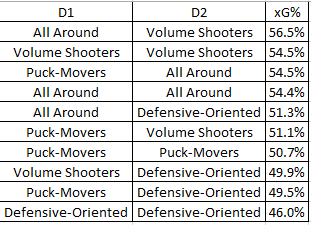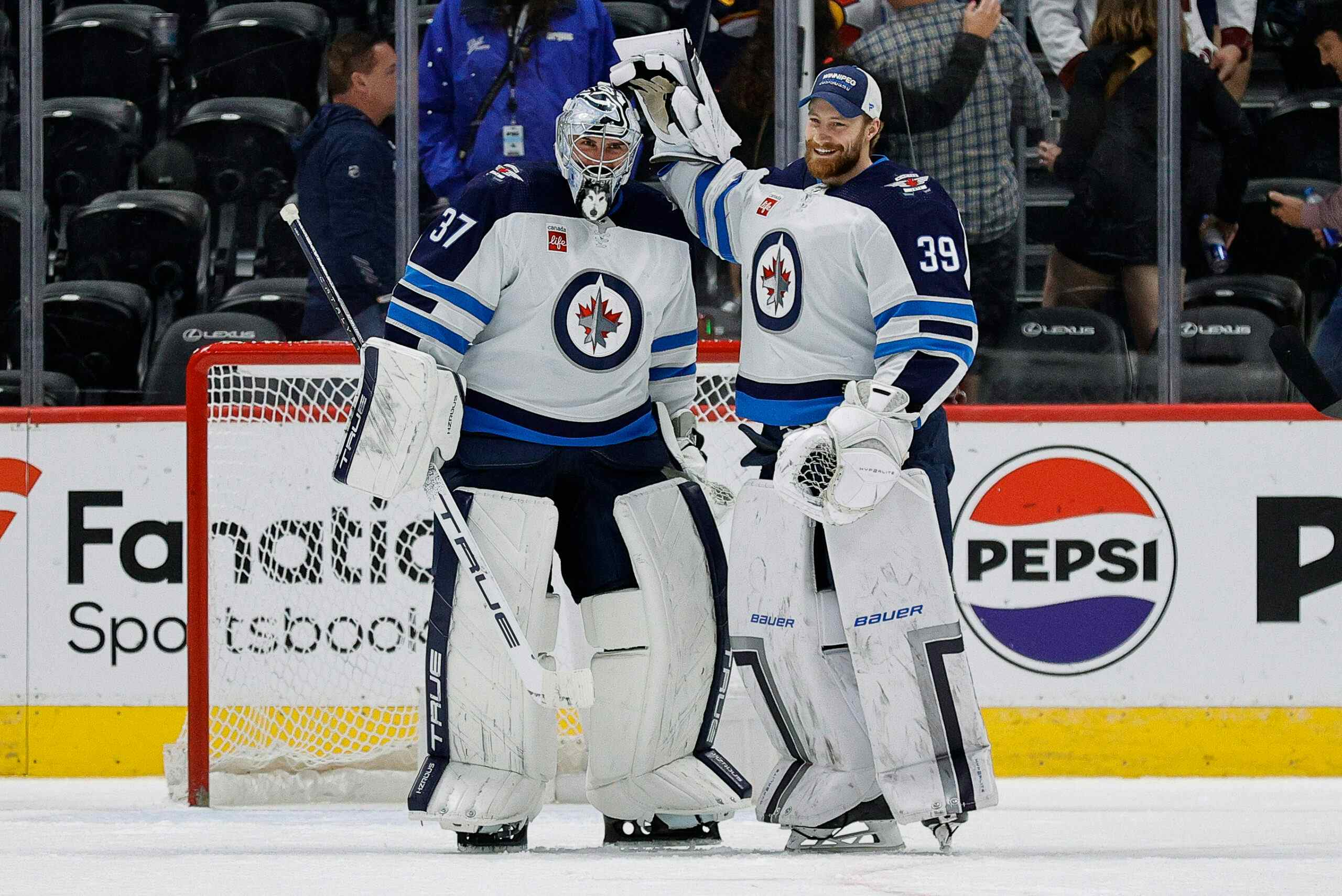Maurice’s Lineups are not Optimal

By WPGChief
6 years agoGoing into his fourth full season after taking the helm of the Winnipeg Jets mid-season in 2013-14, fans and management alike are becoming familiar with the tendencies of the youngest coach ever to reach 1,000 games.
While first earning the love of the city by taking the team to the playoffs in the third season since relocating, Paul Maurice and the rest of management quickly hit the reset button, opting to inject youth so that the team may prosper in the future with multiple, long post-seasons. What has happened since may simply be described as “growing pains”.
For the past two seasons, the Winnipeg Jets have been the fourth and second youngest teams in the NHL, with an average age of 26.372 in 2015-16 and 25.745 in 2016-17. Going into this season, the Jets’ roster will have an average age of 26.285 – so one may think that the youth movement will still cause problems for the Jets hoping to “rise together” to the playoffs this year. While this year’s preseason led to some optimism for a more powerful power play and a stronger presence in net thanks to Steve Mason, Paul Maurice continues to struggle with icing sub-optimal lineups in the hopes of more effective defensive play.
The 2017-18 Season Opening Lineup
With a roster that oozes offensive talent, Maurice has opted to stack his top six offensive goals above replacement on the top two lines on his opening day roster. In fact, all of Perreault, Scheifele, Wheeler, Ehlers, Little and Laine were also the top six in goals above replacement and goals above replacement per 82 games, with Ehlers being the odd player out when looking at goals above replacement per 60 minutes, dropping to seventh. Even when you look at other simpler metrics, like RelCF%, only Laine is the player out of the top six forwards leading in that category.
And then you have the likes of other players itching to get a chance to prove their worth: Nic Petan, whom now has a comfortable seat in the press box; Kyle Connor, whom after tearing up the AHL at the end of last season has been sent back down there; Roslovic, whom has been a steady centre that management would like to see develop further – the Jets absolutely have the talent to score goals. And that’s just the forwards.
No matter how you look at it, no matter what Paul Maurice might have said over the off-season and pre-season about a top 9 – Paul Maurice opted to stack his top two lines with the best talent this organization has to offer.
Optimal NHL Lineups
This line stacking should be met with skepticism and caution, as all of this flies in the face of previous research on optimal lineups within the NHL. In a salary cap world, teams need to allocate their resources – their players – in the most effective manner.
At the 2nd annual Rochester Institute of Technology Hockey Analytics Conference (#RITHAC), Dawson Sprigings (also known as @DTMAboutHeart) presented on how NHL teams should maximize player usage, and found that there were diminishing returns on having your top talent together on one line. This was partly due to the fact with how it left other parts of the lineup with replacement or below-replacement level players. The other matter can be thought of intuitively – if you have all your good players on one or two lines, your opponent only has to game plan for those lines. They can only be on so much, and depending on special teams and penalties called, may not even on the ice enough to have actual impact during 5v5 play.
Alex Novet’s research into strong and weak links complements this research. In finding that strong links (i.e. the team with the best player usually wins (basketball)) is more accurate to hockey than it being comprised of weak links (i.e. the team without the worst player usually wins (soccer)), Alex confirms that “getting the very best players is essential to success [in the NHL].” Pair that with the work of Dawson/DTMAboutHeart, and Alex surmises that “[as] it is better to spread out top players on different lines rather than putting them together[,] that suggests that individual matchups are also strong link games, and it is best to have as strong a player as possible on the ice at all times.”
When we look at the Jets, of the top 50 players in the NHL last season according to Corsica’s WAR/82, the Winnipeg Jets were tied at first with four players (the other teams were Washington, Pittsburgh, Edmonton and Florida). So, the Jets should have one of the factors of success in today’s NHL. However, Paul Maurice’s obsession with having Lowry centre his third line, and stack the top two lines with his offensive talent, are in fact hurting the Jets from winning hockey games.
Playing Styles (“Chemistry”)
There is yet another way to see if Maurice’s lines are meshing together well – what some may call “chemistry”. Thanks to Ryan Stimson’s initial efforts, volunteers and those like Corey Sznajder have collected immense data related to passing and zone entries. Ryan later created metrics using this data to help identify playing styles as it relates to offense, being able to accurately label forwards and defencemen (such as “playmakers”, “shooters”, “all around”, “defensive-oriented”, etc.). Using that, he determined which line combination of forwards and defenceman best led to a positive share of expected goals:


While some may view “dependents” and “defensive-oriented [players]” as liabilities and should not be played at all, the fact of the matter is that not one NHL team can have the absolute top talent, especially with the constraints of the salary cap. Though you do indeed have to play some of those players, you can play them in a manner that doesn’t drop you below the 50% share of expected goals in a game (the top of which is being with two “playmakers”, giving you an xG% of 54.5%). Any reader can play with this themselves by viewing radar charts of players’ style metrics here. With that in mind, you can play with the top two Jets’ lines yourself and find out that they are all very good players with one aspect missing for some of them (i.e. Perreault is not a shooter, Scheifele is a bit better but also lacking in that aspect, Wheeler is good all around) – but let’s take a look at the bottom two lines for the opening day roster.

When looking at the Matthias-Lowry-Armia radar chart (Armia is the green chart with high shot volume), it appears as if these three barely complement each other. Armia is the only shooter; Matthias is the only player with significant entries and entries assists, and; Lowry has impressive passing and shot assists/contributions (likely due to his ability to keep the puck on his stick in the offensive zone). With regards to Armia, in his 101 games in the NHL he has primarily been asked to be on the line with Lowry and Matthias and fill in that shooter role – but only has 10 even strength goals to show for it. Reducing that metric, there is a clear gap with no one being able to finish and one method of entering the offensive zone.

When it comes to Dano-Copp-Tanev, like many other NHL 4th lines, there is nothing exceptional about these players, but Copp and Dano’s steady play have brought them to just above the 25th or just below 50th percentile for many of these offensive metrics. With Tanev, the only thing he seems to do is shoot – and only has 2 5v5 goals to show for it (though he had an xG of nearly 4!). However, as we saw above, a Balanced-Balanced-Dependent like Dano-Copp-Tanev only has a xG% share of 45.4% – the fourth worst of possible combinations. Adding a playmaker or shooter like Petan or Connor and taking away a dependent like Tanev could boost the line’s xG% share to above 50% – just by adding a different playing style.
Closing Thoughts
Initially, I was going to write this post yesterday when I saw Tanev being slotted in beside Lowry and Matthias. Other than the fact that Tanev is just generally a worse player than any other player on the Jets’ roster (with Hendricks perhaps coming in at a close second), replacing Matthias with Tanev is not a play-style that meshes well with Lowry and Armia, and is instead spreading your worse talent over your lineup instead of your best.
Spreading your top talent over your lineup can be difficult if you’re not sure about the chemistry of how players work together. Scheifele and Little on the first and second lines should centre one of Wheeler, Laine, Ehlers, and Perreault. Having a third line capable of scoring at nearly the same capacity as your top two seems to be the trend of many successful NHL teams these days, and if that means Lowry can’t centre them due to his playing style not meshing well with your top talent, then so be it. However, it seems that as long as Maurice is determined to have Lowry as his third-line centre in a matchup capacity against the opposing team’s top lines, the Jets will be forced to stack their forward talent, and only continue to cause matchup and chemistry issues for themselves.
Recent articles from WPGChief





